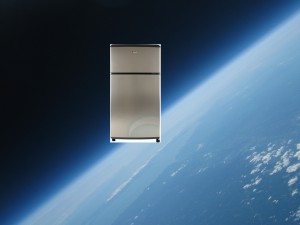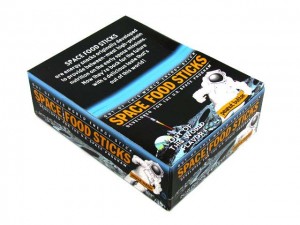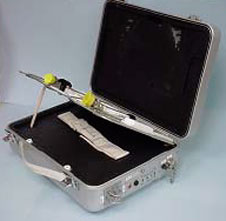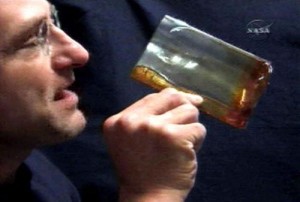Appliances… IN SPACE!
March 30th, 2012
 Taking care of the housework can be a lot of work, though using the latest and greatest gadgets from Appliances Online can save you time and effort.
Taking care of the housework can be a lot of work, though using the latest and greatest gadgets from Appliances Online can save you time and effort.
But would those same appliances still be able to help you cook, clean and more without a few of the things we all take for granted, such as gravity, and regular day/night cycles?
In other words – what appliances are used in space?
Keeping cool in space
 We get some fairly extreme weather in this country, from baking desert heat to chilling antarctic winds. But spare a thought for the space travellers that must contend with the Absolute Zero of deep space and the unfiltered heat and radiation of the Sun itself.
We get some fairly extreme weather in this country, from baking desert heat to chilling antarctic winds. But spare a thought for the space travellers that must contend with the Absolute Zero of deep space and the unfiltered heat and radiation of the Sun itself.
Aboard the International Space Station (ISS), the occupants are mostly protected from these extremes of temperature by layers of protective, reflective insulation. Of course, this also means that the waste heat generated by the station’s electronic systems gets trapped on board, so a complex system of water coolers is required to keep conditions tolerable inside.
Also, because of the limited air supplies aboard the ISS, a system of “scrubbers” is used to extract the carbon from carbon dioxide, leaving only the oxygen, to help keep the air more breathable for longer.
Makes you thankful for relatively simple split system reverse cycle air conditioners, doesn’t it?
Storing food in space
 Luckily for the ISS crew, things have improved since the days of Space Food Sticks. All kinds of preserved and fresh food is available aboard the station, though it is stored in tightly-sealed packages and still needs to careful preparation before it can be eaten in zero gravity.
Luckily for the ISS crew, things have improved since the days of Space Food Sticks. All kinds of preserved and fresh food is available aboard the station, though it is stored in tightly-sealed packages and still needs to careful preparation before it can be eaten in zero gravity.
As most of the ISS is devoted to scientific research and the like, originally the only fridge aboard was reserved for specimens only (not that that always stops earthbound scientists…). When the station received its first big expansion, it received a second fridge for storing cool drinks. Its arrival was much welcomed by the crew, as “six months of lukewarm orange juice can kind of bum you out.”
To help make dehydrated food more edible, a water dispenser or “rehydration station” is also present in the galley. While we doubt that this is as simple or convenient as a typical kitchen filter tap, we hope that it uses filters that are just as good or even better – limited water supplies aboard the ISS means that all water gets recycled through a Water Recovery System. And we do mean ALL water, including… liquid waste.
Necessary, but ew.
Cooking in space
 As astronauts don’t prepare or eat the same kind of food as us gravity-bound Earthlings, they don’t cook it in the same way either. Instead of an oven or microwave, the ISS crew uses two food warmers to prepare hot meals. Resembling large suitcases, they are capable of heating six rehydratable and six wet food packages simultaneously in about 40 minutes. Convenient!
As astronauts don’t prepare or eat the same kind of food as us gravity-bound Earthlings, they don’t cook it in the same way either. Instead of an oven or microwave, the ISS crew uses two food warmers to prepare hot meals. Resembling large suitcases, they are capable of heating six rehydratable and six wet food packages simultaneously in about 40 minutes. Convenient!
While the warmers aren’t as powerful as an oven, they can still be used to cook. Enterprising crew members have found that when you combine the fresh garlic, onions and olive oil sent up by Russian cargo ships, then place the mixture in the warmer for four or five 30-minute cycles, you get some (relatively) delicious cooked garlic and onions. The crew tend to prefer their food extra-spicy, as prolonged weightlessness dulls the senses of smell and taste.
But even if their cooking methods are a bit unusual, the crew of the ISS still sit down to eat their meals just as they would on Earth. Well, there are a few small differences, such as the cutlery and crockery being held to the table with magnets, and occasionally duct tape.
Drinking in space
 No, we’re not talking about out-of-this-world cocktails. Though just imagine the flair that an outer-space bartender could pull off…
No, we’re not talking about out-of-this-world cocktails. Though just imagine the flair that an outer-space bartender could pull off…
Typically liquids in space are drunk from plastic pouches with straws. While this is certainly efficient, especially with hot drinks that could be dangerous when sloshed about in zero gravity, it’s not quite the same as sipping from a mug.
Good thing that astronauts are also scientists and engineers. One coffee addict, Don Pettit, took the initiative and invented a zero-gravity coffee cup that he could drink his morning brew with. Now that’s dedication.
Earth-based fans of the idea have set about finding ways to improve the original design, meaning that future space adventurers may not have to give up all of their little luxuries.
Cleaning in space
 Once an orbital meal is over, it’s important to clean up thoroughly, lest floating food debris get into the fans and ventilation systems that keep conditions livable. Yes, Homer Simpson’s problem with potato chips in space is a genuine concern for astronauts.
Once an orbital meal is over, it’s important to clean up thoroughly, lest floating food debris get into the fans and ventilation systems that keep conditions livable. Yes, Homer Simpson’s problem with potato chips in space is a genuine concern for astronauts.
Any escaped food particles are sucked out of the ventilation systems by the crew with the help of a vacuum cleaner. No idea if any actual vacuum of space is involved, though.
Instead of using a dishwasher or sink to wash dishes and used utensils in space, the ISS crew use pre-moistened wipes to give everything a thorough wipe down.
As for space laundry, there is no washing machine aboard the ISS. Instead, all of the crew’s clothes are disposable – after three days of wear, they’re discarded.
Now THERE’s an idea…

Leave a Reply